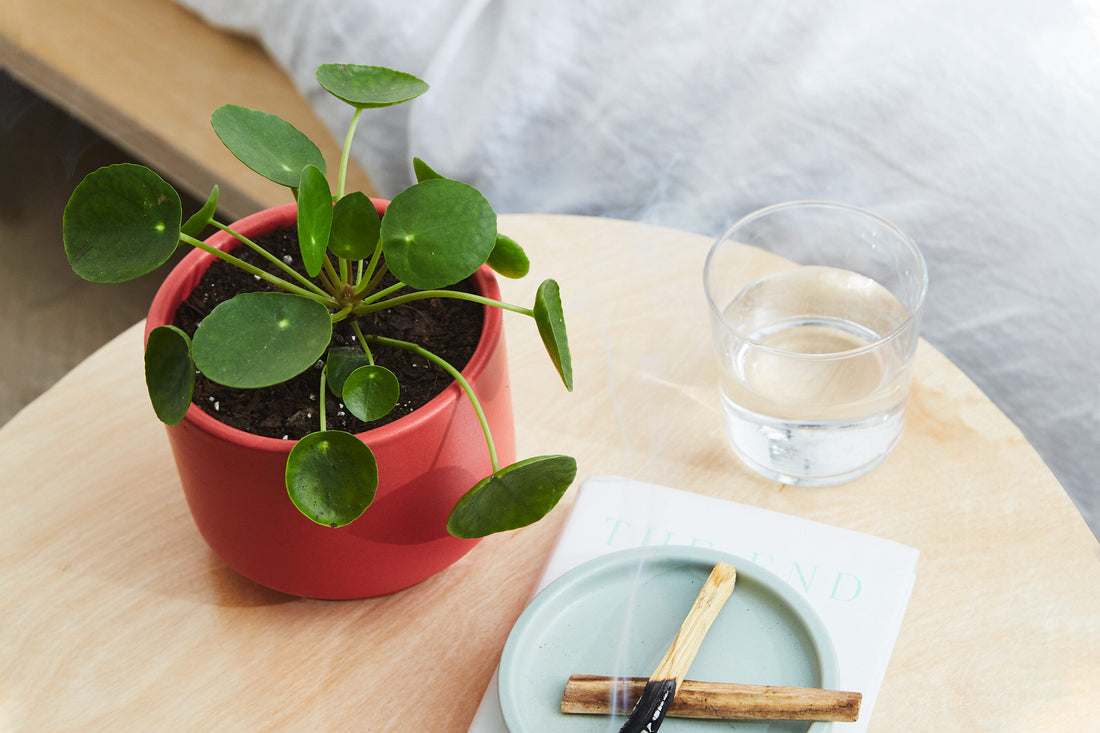
Plants 101
Pilea Peperomioides
Sure, money doesn’t grow on trees, but the Coin Plant / Chinese Money Plant (Pilea peperomioides) is worth spending some time on.

Sure, money doesn’t grow on trees, but the Coin Plant / Chinese Money Plant (Pilea peperomioides) is worth spending some time on.
Pilea peperomioides is an Asiatic perennial herb that is native to Yunnan Province in Southern China at the foot of the Himalayas. Pileas are a part of the stinging-nettle family, Urticaceae. Plants in this family usually have stinging hairs filled with irritating histamines. Achoo! Inflorescences consist of clusters of highly-reduced (missing more than one whorl), unshowy, unisexual flowers. Many plants in this family are considered weedy. Some Urtica are used as an herbal tea for various blood and menstrual ailments.
The Coin Plant has been quite a mystery in recent times, especially in the UK. Samples of it would be taken to Kew Gardens to be identified from houseplant collections from the 70s and onwards to be returned with non-committal suggestions such as ‘possibly a Peperomia’, ‘please send flowers next time’ or ‘we do not identify sterile material’.
It wasn’t until 1978 that leaves and an inflorescence (flower spike) arrived at Kew, sent by Mrs D. Walport of Northolt. This sample baffled the botanists, as the leaves were like a Peperomia, but the inflorescence was like a Pilea’s. When there is doubt about plant identity, the herbarium records are scoured to see if anything like this has been found in the past. Kew botanist Wessel Marais found that it had been seen and described before by German botanist Friedrich Diels as P. peperomioides. The Latin name is appropriate, as “peperomioides” translates to peperomia-like. Of course, although Diels described it to the botanical world officially naming it in 1912, samples had been collected from China by George Forrest in 1910 in the Tsangshan mountain range, which rises to almost 14,000 feet in altitude (4,250m), just west of the ancient city of Dali (Tali) in the western Yunnan Province.
As it turns out, these plants had been in local cultivation in Yunnan Province as an ornamental plant for quite some time. However, this plant, like many other Pilea, is insignificant in value, and like other Pilea, it wasn’t paid much attention. Even though it had been described in 1912, it had been forgotten about for almost 30 years. Then in 1946, it was rediscovered and brought to Norway by a Norwegian missionary Agnar Espegren, upon the expulsion of religion and foreigners by Chairman Mao. From Norway, it was distributed by friends to friends, and eventually all over the world as a houseplant. Because there was never really any public demand for this plant, it was never commercially grown until the late 2010’s.
Thankfully, money can’t buy me (plant) love.
General Care
Sunlight
Thrives in medium-bright indirect light. Can tolerate a few hours of bright direct light.
Water
Water every 1-2 weeks, allowing soil to dry out between waterings. Expect to water more often in brighter light and less often in lower light.
Humidity
Normal room humidity is fine.
Temperature
55°F-85°F (13°C-30°C). It’s best not to let it go below 50°F (10°C).
Common Problems
It is generally a very easy-going plant. May get spider mites and mealybugs. Treat spider mites and mealybugs as soon as they appear with weekly sprays of horticultural (Neem) oil and regular wipe-downs of the plan
SYMPTOM: Wilting plant or curling leaves, dry potting mix
CAUSE: Underwatered
SYMPTOM: Yellowing leaves, black stems
CAUSE: Overwatered
Precautions
This plant is pet-friendly! Best practice is always to keep houseplants out of reach of small children and pets.

Words By The Sill
Empowering all people to be plant people—a collection of articles from The Sill's team of plant experts across a variety of plant care topics to inspire confidence in the next generation of plant parents. Welcome to Plant Parenthood™.
Do Some Plant Shopping